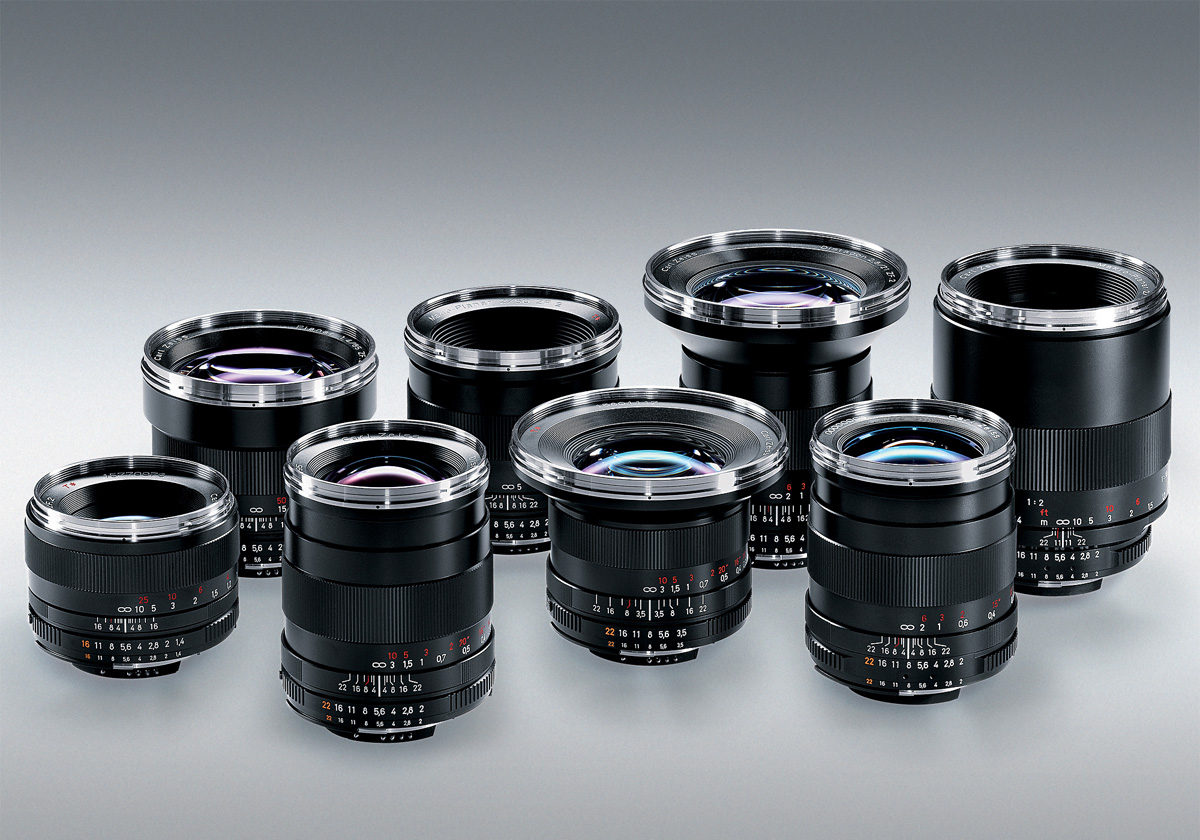Click per ingrandire
Quasi come un fulmine a ciel sereno, Zeiss ha annunciato la disponibilità prossima ventura della linea ZF.2 di ottiche per attacco Nikon.
Rinnovata e stavolta dotata di CPU a bordo per permetterne il riconoscimento da parte del corpo macchina ed un maggior controllo negli automatismi di scatto, la gamma conterà in totale otto obiettivi, sei dei quali saranno disponibili dalla fine di Novembre mentre i restanti due, il Distagon T* 2/28 ZF.2 ed il macro Planar T* 2/100 ZF.2, verranno introdotti nella primavera del 2010.
Ma non è finita qui: Martin Klottig, Marketing Manager Zeiss, ha reso noto che il Distagon T* 2.8/25 ZF è in fase di riprogettazione ed ottimizzazione. Tutto questo ben di Dio si potrà avere a prezzi compresi tra 545 e 1.386 Euro, tasse escluse.
Una cosa però ci ha lasciato perplessi nel comunicato stampa, un pezzetto della prima frase: "new series of lenses for the semi-professional market". Che cosa vorrà dire quel "semi-professional"? In tutta onestà le attuali ottiche ZF sono ben oltre il semi-professionista e vengono correntemente usate da fior di professionisti. L'unica cosa che ci viene in mente, oltre forse ad un errore, è che Zeiss abbia in cantiere anche qualcos'altro: in fondo, se abbiamo imparato una cosa dai tedeschi, è che difficilmente scelgono a casaccio le parole da usare.
A proposito, la linea ZF attualmente in vendita verrà proposta fino ad esaurimento dei pezzi in magazzino.
Link. Carl Zeiss Germany, sito web ufficiale
Press release ufficiale (lingua inglese)
Maximum image quality meets the comfort of automatic control
OBERKOCHEN/Germany, 16.11.2009.
Optics specialist Carl Zeiss today announced its introduction of a new series of lenses for the semi-professional market: the ZF.2 with F bayonet for digital SLRs. Thanks to its electronic interface (CPU), these new ZEISS lenses support all- important operations such as the automatic mechanisms for time, aperture setting and program. The CPU also supports manual exposure settings, including those for camera casings that are not AI-compatible. Since the lens now transmits the EXIF data such as manufacturer, date, metering system and exposure to the camera, photographers no longer need to set the parameters manually. These quicker and faster handling capabilities of the ZF.2 lenses are especially useful under hectic shooting conditions.
ZEISS lenses truly come into their own in situations that demand extreme photographic creativity and maximum image quality. Carl Zeiss’ established fixed focal length lenses are known for their high light sensitivity and precise manual handling, leaving the photographer in full control. The new ZF.2 series will be especially interesting for photo enthusiasts who value creative, high-quality images combined with the comfort of automatic settings.
Martin Klottig, Marketing Manager of the Camera Lens Division at Carl Zeiss AG: “The ZF.2 lenses are ideal tools for photographers who want to concentrate more on the subject than on their camera equipment. Whether at a wedding, a toddler’s first steps or impressions from faraway countries, these lenses are perfect for photographers who want to capture once-only moments quickly and accurately. These situations demand first-class technology that captures spontaneous actions without too much effort and delivers fantastic images each time.”
The ZF.2 lenses are available in eight focal lengths, six of which will be available from the end of November: 3,5/18, 2,8/21, 2/35, 1,4/50, 2/50 and 1,4/85. The Distagon T* 2/28 ZF.2 and macro Planar T* 2/100 ZF.2 will be introduced in Spring 2010. “We are currently completely reworking and optimizing the Distagon T* 2.8/25 ZF. As a result, it will be available for other mounts somewhat later,“ says Klottig.
The prices for these new lenses will lie between EUR 545 and EUR 1.386 (excluding VAT). With the new ZF.2 series, Carl Zeiss extends its acclaimed ZF family of lenses, for which there is still high demand and possibly long waiting times.
“We will offer the ZF series as long as the demand lasts,” stresses Klottig.







 Rispondi quotando
Rispondi quotando
